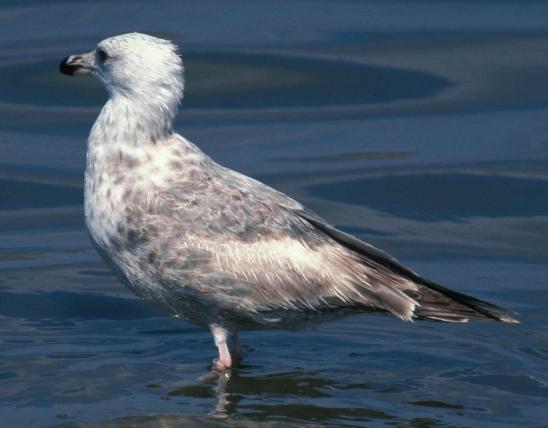
Ring-billed gull adults have pale gray upper wings and wide black wing tips with small white spots. The bill is yellow with a black ring near the tip. The legs are yellow. Immatures have pink legs, a pink bill with a dark outer half, a gray mantle, and brownish wings. Call is a two-syllable kyah keeya, higher than the herring gull’s.
Similar species: This is Missouri’s most common gull, but at least 18 species of gulls and 6 terns have been recorded in Missouri. Most people have a general idea of what gulls look like. But to distinguish the many species, it is best to learn from someone who has had experience with gull identification, because some species take four years to mature and may be seen in many different confusing plumages.
Length: 17½ inches (tip of bill to tip of tail); wingspan: 48 inches.

Statewide. Gulls typically congregate near locks and dams on the Mississippi River, near dams on large reservoirs, and at large landfills.
Habitat and Conservation
This is by far the most frequently observed gull in Missouri and inland in the entire eastern United States. It is a common migrant and winter resident of large lakes and large rivers where at least some water is not ice covered. Gulls’ distinct shape and white plumage makes them easy to spot as they fly near our big rivers. They are excellent soarers, able to take advantage of both horizontal ocean winds and updrafts. Gulls can float on the water like ducks but do not dive underwater.
Food
Bold opportunists and scavengers, they forage on and near water on mussels, fish, and worms but will eat most anything, including carrion and human food items. They sometimes forage in plowed fields for grubs and other small prey items, and in parking lots near water for fast-food refuse. The spot on the bills of many gulls is a “target” that the hatchlings instinctively peck at; this tapping causes a natural reflex in the adults to regurgitate and thus feed the young.
Status
Common transient. As winter resident, common in the south part of the state, rare in the north.
Life Cycle
Ring-billed gulls breed in colonies, mostly in the Great Lakes and northern tier of the United States, and northward into Canada. As with other gulls, the young are down-covered, alert, and able to move around soon after hatching. Young take four years to acquire adult plumage. Missouri is in the wintering range of ring-billed gulls. They start arriving here in October, their numbers are greatest December through February, and they fly north again in March and April.
Human Connections
Where gulls are common, people view these quarreling, opportunistic feeders as loud, dirty, and disgusting. But when you live in the middle of the continent, the sight of a seagull conjures images of exotic, carefree, coastal vacations. Egging and plume hunting nearly wiped out gulls in the 1800s.
Ecosystem Connections
Many inland-living ring-billed gulls of large lakes and rivers never see saltwater. Gulls are one of the many animals that interweave aquatic ecosystems with those of the land, and they require both habitats in order to live.





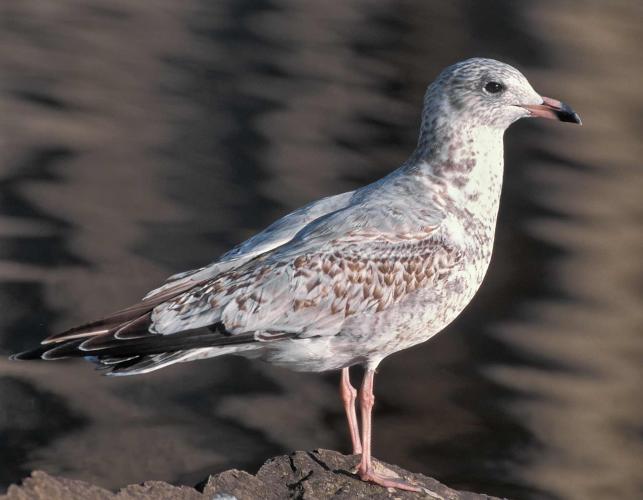

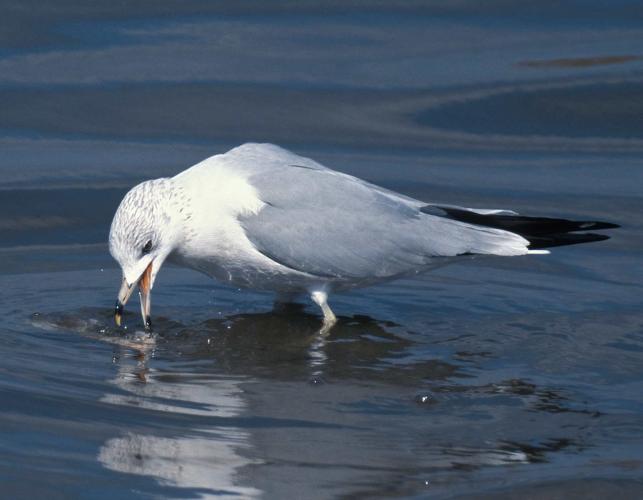

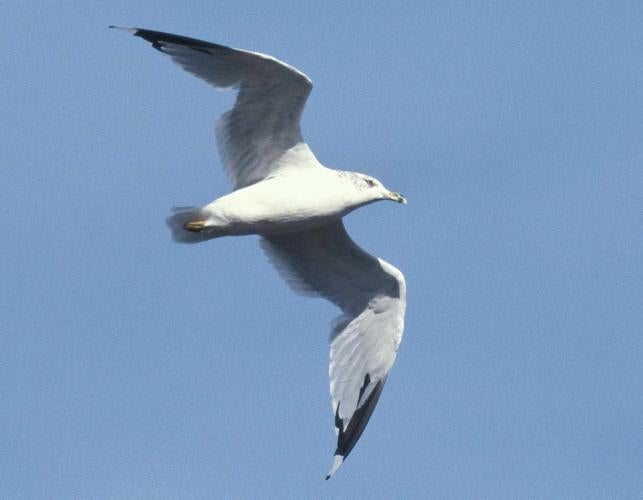

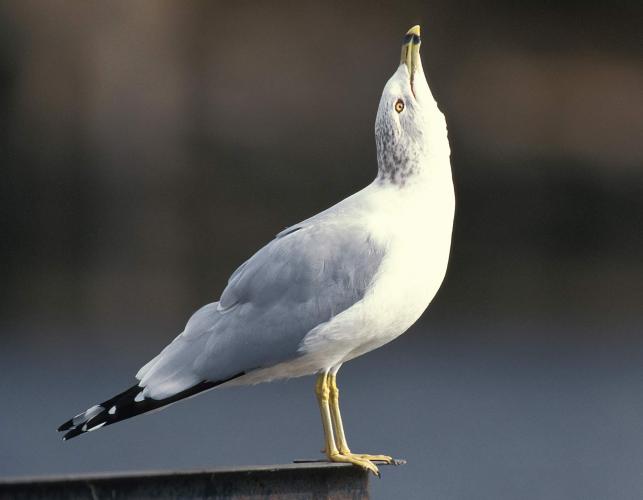
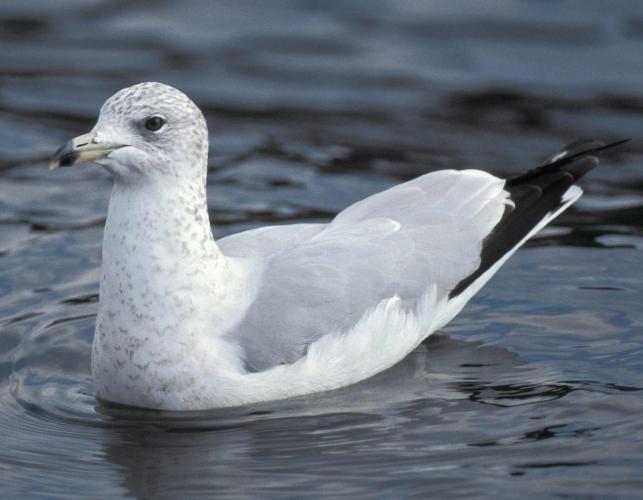
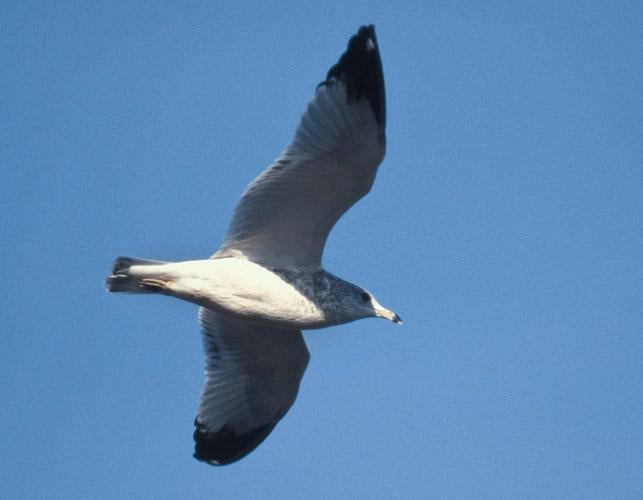






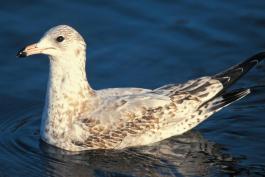

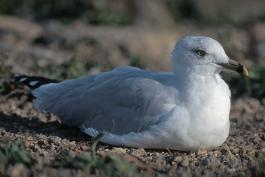




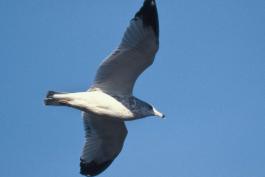
About 350 species of birds are likely to be seen in Missouri, though nearly 400 have been recorded within our borders. Most people know a bird when they see one — it has feathers, wings, and a bill. Birds are warm-blooded, and most species can fly. Many migrate hundreds or thousands of miles. Birds lay hard-shelled eggs (often in a nest), and the parents care for the young. Many communicate with songs and calls.






















